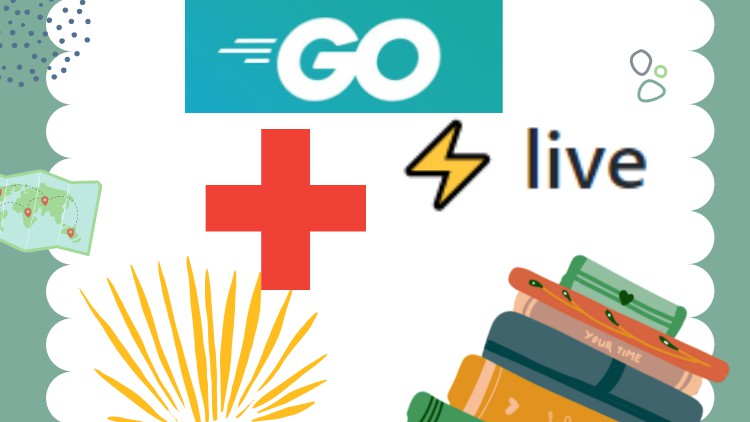
Modern Phoenix LiveView inspired development in GoLang, where JS is not needed (almost).
What you will learn
Real-time user experiences with server-rendered HTML
Phoenix(Elixir) LiveView-like programming in Go
Form-based UI using Live(View)
Pub/Sub based user communication using Live(View)
Periodic background jobs using Live(View)
Creating a single-page application in one file
Integration with Fabric framework
Handling application events in a declarative way
Using websocket communication between frontend and backend
Description
Welcome to the ‘Mastering Live(View) programming in Go’ course. With this course, you will add value to your existing Go Lang knowledge by getting familiar with several web development techniques known as a ‘LiveView’ programming model introduced within the last several years.
We will focus on several topics popular when building web applications and we take a look at how to implement those features using Live(View) techniques where JS usage is not needed or minimized at least. We are going to see how the Live(View) programming approach makes web app development easier to do and more solution-oriented.
What is the LiveVew programming approach/model?
LiveView provides rich, real-time user experiences with server-rendered HTML. The LiveView programming model is mostly declarative: instead of saying “when event ABC happens, change XYZ on the page”, events in LiveView are managed by handlers bound to event id. Once the state changes, LiveView will re-render the relevant parts of its HTML template(calculate diff) and push it to the browser, which updates itself most efficiently. This means developers write LiveView templates as any other server-rendered HTML and LiveView does the hard work of tracking changes and sending the relevant diffs to the browser using websocket communication. Phoenix Framework widely popularized this approach and there are implementations for many significant languages or platforms.
Topics covered by this course:
During the course, we create a basic web application in Go Lang with a Live(View) approach. The main topics include:
- LiveView-inspired programming – technical info
- Key Live(View) concepts explained
- Thermostat – interactive application without JS
- Implementation of Pub/Sub communication
- Enhancing thermostat – implementation of chat, clock, JS hooks
- Live(View) in popular frameworks
- Integration of Live(View) application with NATS server
An important part of this course is to realize ‘what we don’t need to do’ when using the Live(View) approach. Simplification can be huge and the old saying that ‘the best code is the code you don’t have to write’ is proven here.
Summary:
The goal of this course is to make a guide in the Live(View) programming world. We use a pragmatic approach by building real applications and exploring the Live(View) programming model practically.
GitHub repository:
The source code is available through the link attached to the last lecture in this course. You can clone the repo and use the code snippets we are building in this course.
Content